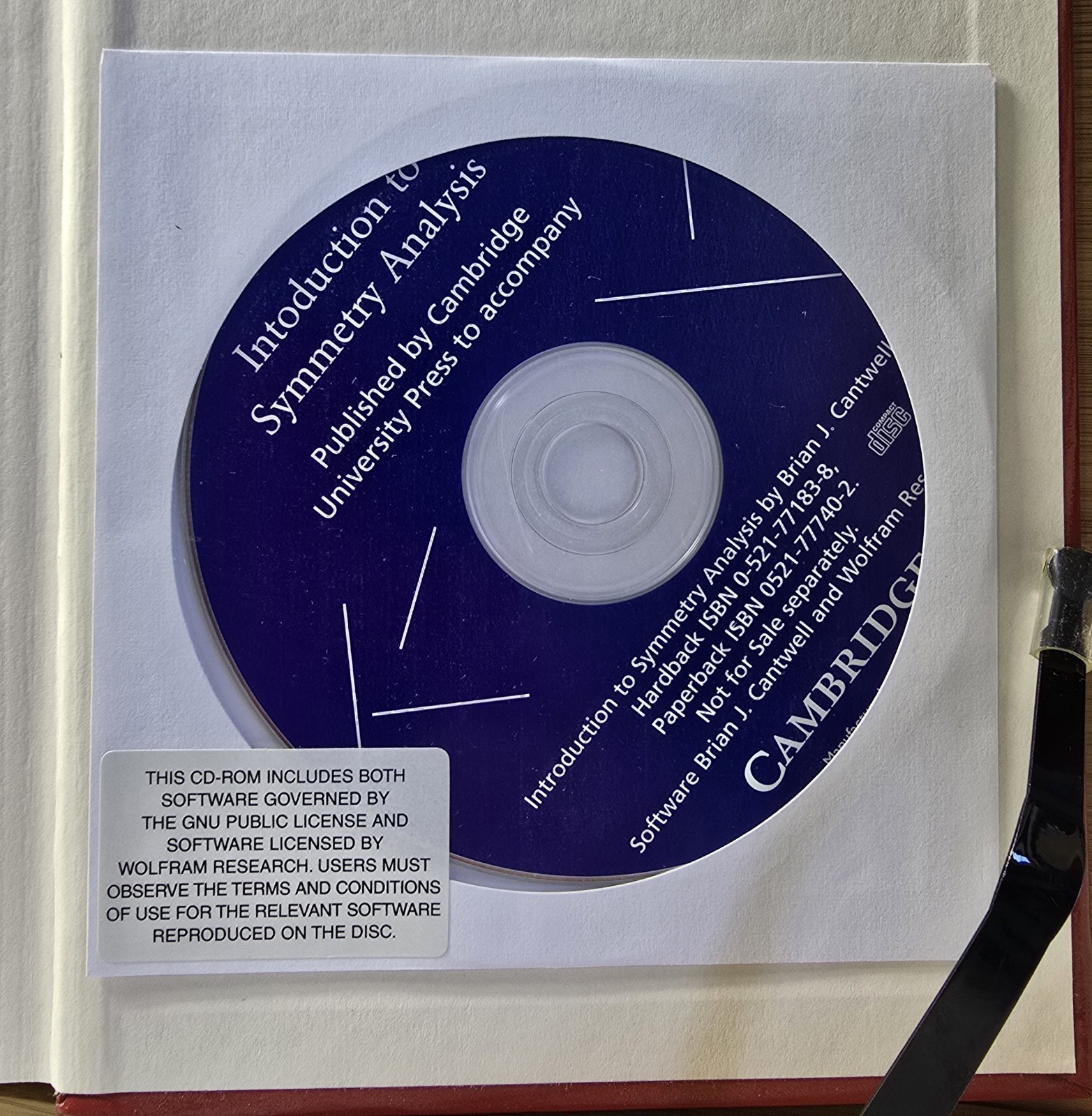Picture 1 of 18

Stock photo


















Picture 1 of 18

Stock photo


















Cambridge Texts in Applied Mathematics Ser.: Introduction to Symmetry Analysis by Brian J. Cantwell (2002, CD-ROM / Trade Paperback)

Ladybug'sTreasureChest (307)
100% positive feedback
Price:
$53.99
+ $5.97 shipping
Returns:
Condition:
Pre-owned condition. There is an inscription on the inside of the front cover. Please see all the pictures. Explore the concepts of symmetry and its applications in science with the book "Introduction to Symmetry Analysis (Cambridge Texts in Applied Mathematics Ser.)" by Brian J. Cantwell. This hardcover textbook with an unopened CD, published by Cambridge University Press in 2002, is a comprehensive guide to symmetry analysis, a technique used in differential equations, physics, and general mathematics. The book includes 651 pages and is 9 inches in length, 6 inches in width, and 1.3 inches in height.
Oops! Looks like we're having trouble connecting to our server.
Refresh your browser window to try again.
About this product
Product Identifiers
PublisherCambridge University Press
ISBN-100521777402
ISBN-139780521777407
eBay Product ID (ePID)1905735
Product Key Features
Number of Pages651 Pages
Publication NameIntroduction to Symmetry Analysis
LanguageEnglish
Publication Year2002
SubjectDifferential Equations / General, General, Physics / General
TypeTextbook
Subject AreaMathematics, Science
AuthorBrian J. Cantwell
SeriesCambridge Texts in Applied Mathematics Ser.
FormatCD-ROM / Trade Paperback
Dimensions
Item Height1.3 in
Item Weight31.4 Oz
Item Length9 in
Item Width6 in
Additional Product Features
Intended AudienceScholarly & Professional
LCCN2001-037835
Reviews'... an easy to read informal introduction to symmetry methods for ordinary and partial differential equations.' Monatshefte für Mathematik, '… an easy to read informal introduction to symmetry methods for ordinary and partial differential equations.' Monatshefte fr Mathematik, 'Overall, this was an enjoyable book to read, which I could recommend to someone to tackle as background reading. ... if one's interest is in the application of symmetry analysis to problems arising in fluids, then this book discusses 'how' in detail.' Peter Clarkson, University of Kent, 'Overall, this was an enjoyable book to read, which I could recommend to someone to tackle as background reading. … if one's interest is in the application of symmetry analysis to problems arising in fluids, then this book discusses 'how' in detail.' Peter Clarkson, University of Kent, '... an easy to read informal introduction to symmetry methods for ordinary and partial differential equations.' Monatshefte f r Mathematik
Dewey Edition21
Series Volume NumberSeries Number 29
Number of Volumes1 vol.
IllustratedYes
Dewey Decimal515/.35
Table Of ContentPreface; 1. Introduction to symmetry; 2. Dimensional analysis; 3. Systems of ODE's, first order PDE's, state-space analysis; 4. Classical dynamics; 5. Introduction to one-parameter Lie groups; 6. First order ordinary differential equations; 7. Differential functions and notation; 8. Ordinary differential equations; 9. Partial differential equations; 10. Laminar boundary layers; 11. Incompressible flow; 12. Compressible flow; 13. Similarity rules for turbulent shear flows; 14. Lie-Bäcklund transformations; 15. Invariance condition for integrals, variational symmetries; 16. Bäcklund transformations and non-local groups; Appendix 1. Review of calculus and the theory of contact; Appendix 2. Invariance of the contact conditions under Lie point transformation groups; Appendix 3. Infinite-order structure of Lie-Bäcklund transformations; Appendix 4. Symmetry analysis software.
SynopsisSymmetry analysis based on Lie group theory is the most important method for solving nonlinear problems aside from numerical computation. The method can be used to find the symmetries of almost any system of differential equations and the knowledge of these symmetries can be used to reduce the complexity of physical problems governed by the equations. This is a broad, self-contained, introduction to the basics of symmetry analysis for first and second year graduate students in science, engineering and applied mathematics. Mathematica-based software for finding the Lie point symmetries and Lie-Bäcklund symmetries of differential equations is included on a CD along with more than forty sample notebooks illustrating applications ranging from simple, low order, ordinary differential equations to complex systems of partial differential equations. MathReader 4.0 is included to let the user read the sample notebooks and follow the procedure used to find symmetries., A broad, self-contained, introduction to the basics of symmetry analysis for first and second year graduate students in science, engineering and applied mathematics. The text emphasises applications, and numerous worked examples are used to illustrate basic concepts. Mathematica-based software is included on a CD for easy access to the examples., This text offers a broad, self-contained, introduction to the basic concepts of symmetry analysis and is intended primarily for first and second year graduate students in science, engineering and applied mathematics. Mathematica-based software for finding the Lie point symmetries and Lie-Backlund symmetries of differential equations is included on a CD along with more than forty sample notebooks illustrating applications ranging from simple, low order, ordinary differential equations to complex systems of partial differential equations. The software requires Mathematica 2.2 or higher. MathReader 4.0 is included to permit the user without access to Mathematica to read the sample notebooks and follow the procedure used to find symmetries., This text offers a broad, self-contained, introduction to the basic concepts of symmetry analysis and is intended primarily for first and second year graduate students in science, engineering and applied mathematics. Mathematica-based software for finding the Lie point symmetries and Lie-B cklund symmetries of differential equations is included on a CD along with more than forty sample notebooks illustrating applications ranging from simple, low order, ordinary differential equations to complex systems of partial differential equations. The software requires Mathematica 2.2 or higher. MathReader 4.0 is included to permit the user without access to Mathematica to read the sample notebooks and follow the procedure used to find symmetries.
LC Classification NumberQA371.C195 2002
All listings for this product
Be the first to write a review




















